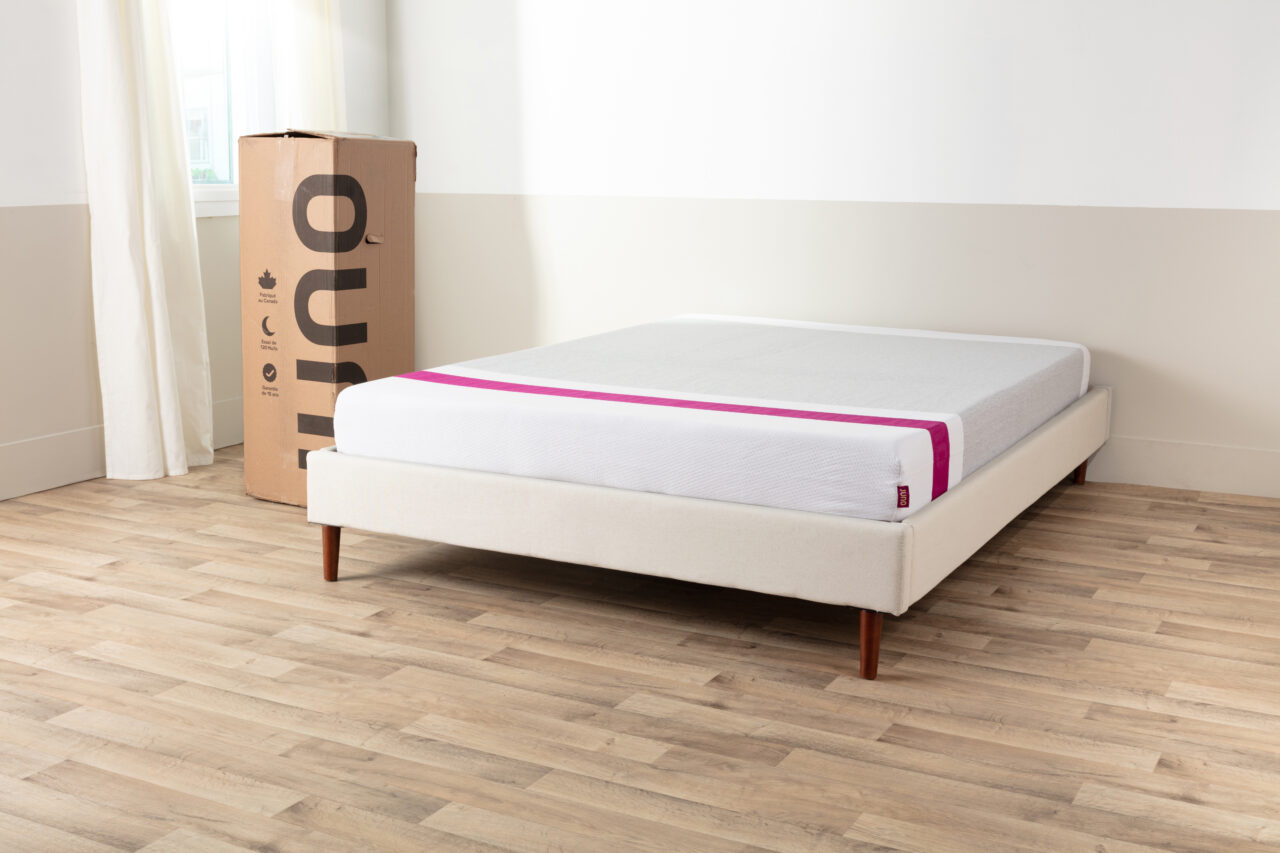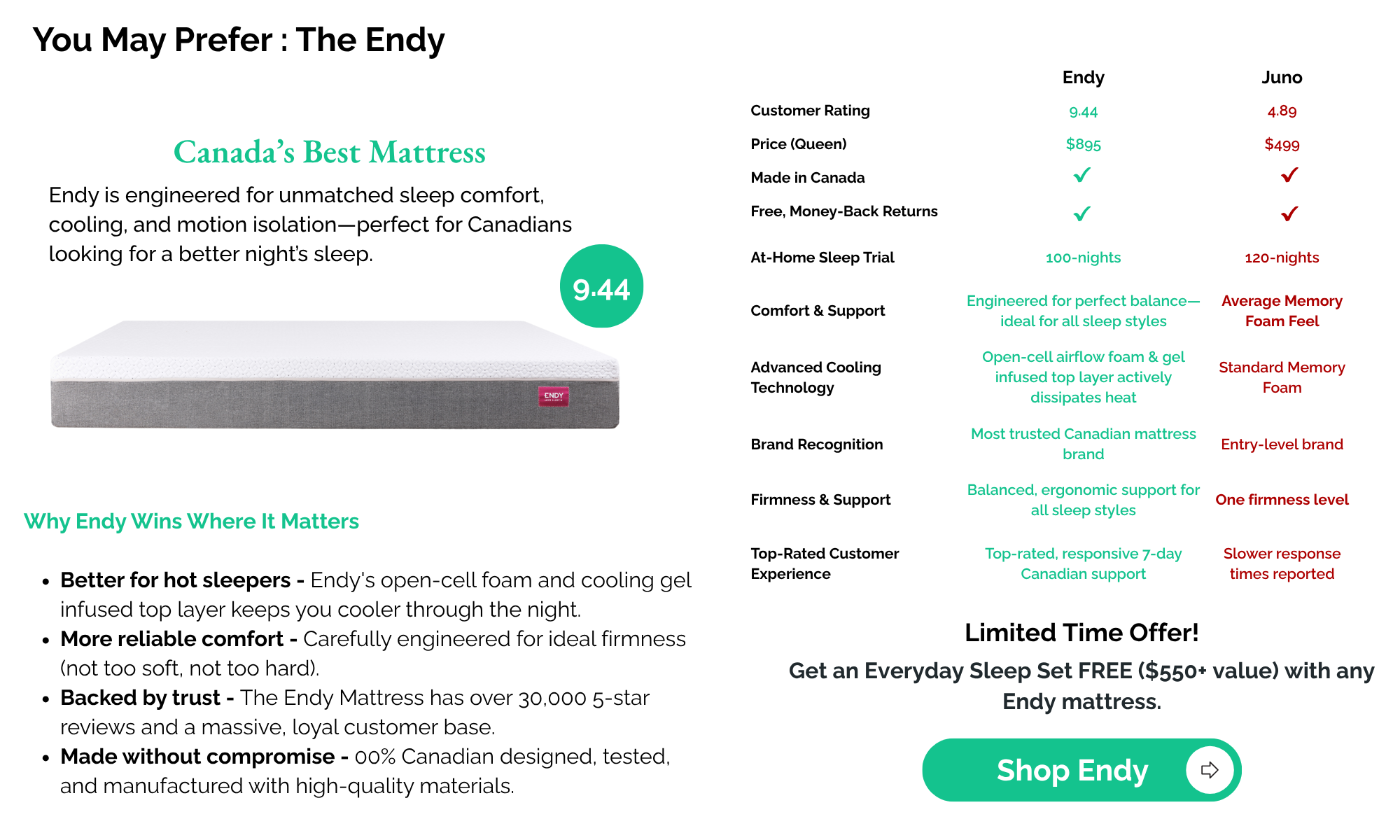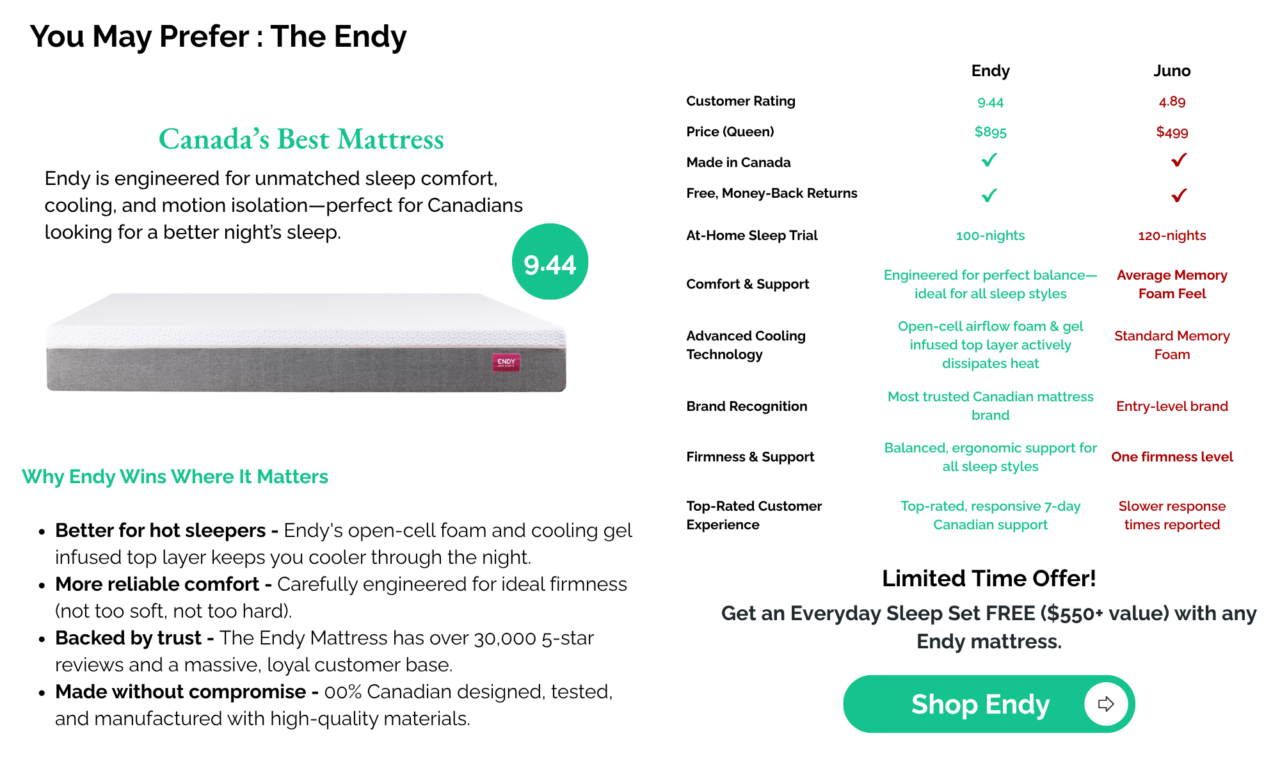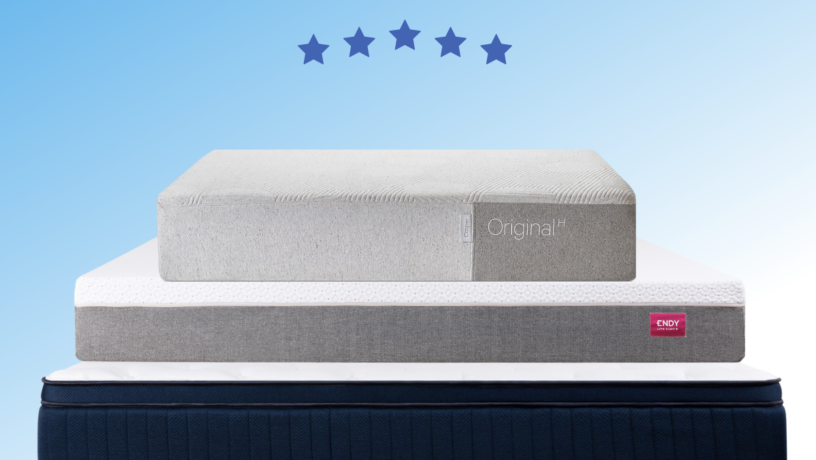Juno Mattress Review


Product Research: Our Process



Juno Mattress: Too Good To Be True?
Our Verdict
Considering the price, the Juno Mattress could be a good option for short-term use or your guest bedroom. However, if you’re looking to invest in a mattress to sleep on every night, other budget friendly options, like Silk & Snow’s S&S mattress, offer excellent value for the money. For a little more investment, mattresses like the The Endy offers great value for money.

Juno Mattress: Too Good To Be True?
















Table of Contents
Mattress Sizes & Prices
| Size | Price | Dimensions |
|---|---|---|
| Twin | $399 | 38″ x 75″ x 8” |
| Twin XL | $449 | 38″ x 80″ x 8” |
| Full / Double | $479 | 53″ x 75″ x 8” |
| Queen | $499 | 60″ x 80″ x 8” |
| King | $599 | 76″ x 80″ x 8″ |
| California King | $599 | 72″ x 84″ x 8” |
| Split King | $898 | 76″ x 80″ x 8″ |
Purchasing and Returns
Unboxing and First Impressions
The Juno mattress is possibly the lightest bed-in-a-box I’ve purchased. In our Spring 2025 testing, unboxing was relatively simple, with the bed forming within 30 minutes, however, I had to wait a full 48 hours before the corners fully formed. The mattress had a subtle smell that lasted 21 days. We did not measure VOC emissions from the mattress, so it is likely the mattress stopped off-gassing earlier, if at all. However, if you are sensitive to smell, this is something to keep in mind.
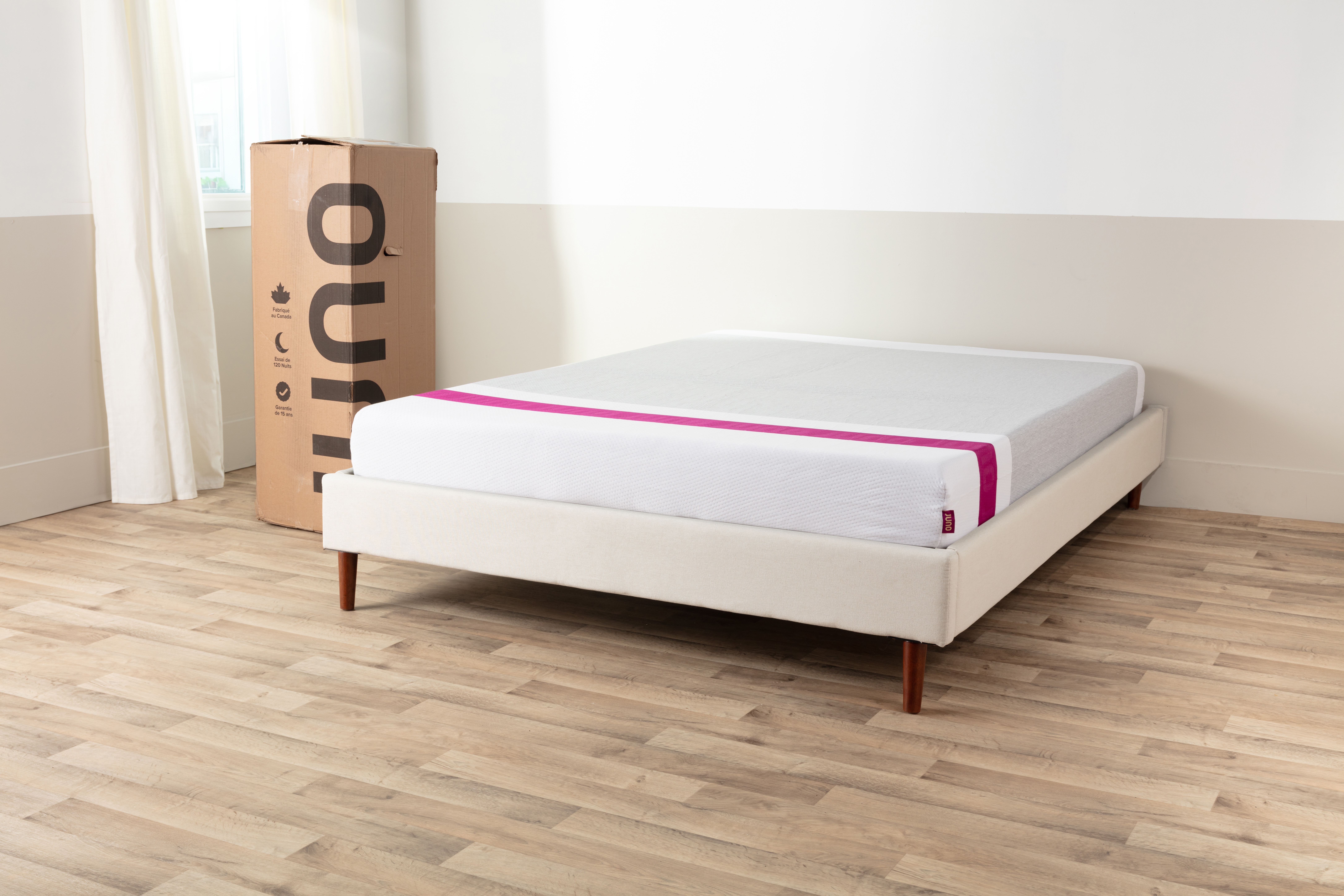
Construction

1. Juno Knit Cover
A stretchy, soft knit cover
2. 2” Cooling Gel Foam
Meant to contour your body and provide temperature regulation
3. 6” Support Foam
This layer is supposed to provide support and minimize motion transfer.
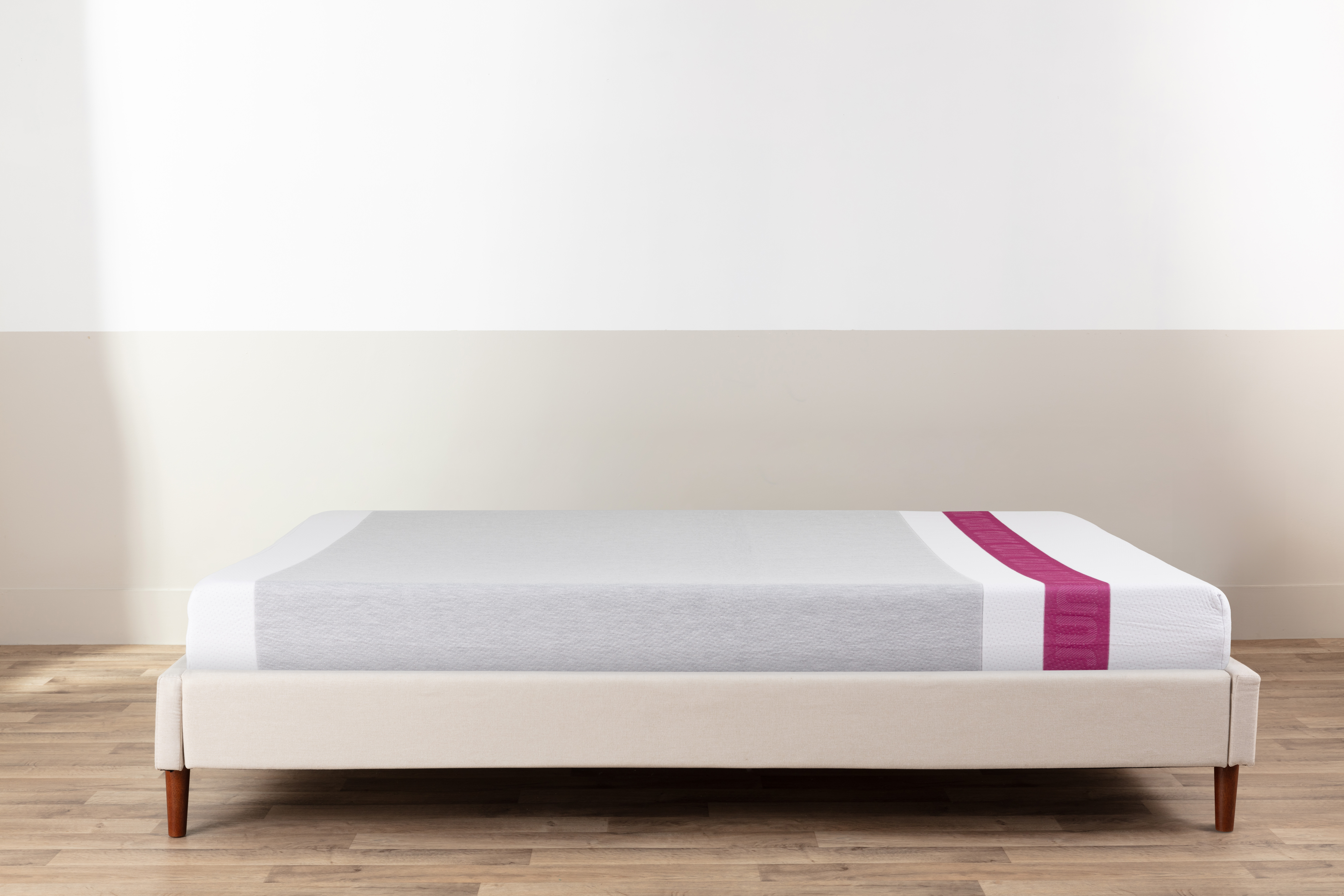
Comfort
Even as a lightweight sleeper (I weigh 127 lbs), Juno Mattress didn’t impress compared to the comforts of more premium mattresses like the Endy Original. There was almost no bounce on it, and I had difficulty moving around on the mattress. As the mattress height is only 8 inches, deep sinkage concerns me, as other all-foam mattresses, like The Casper, are typically 10” in height, providing an additional 2” of foam to support the body.

Firmness
Juno Mattress is considered a medium-firm mattress. We typically see thinner profile mattresses on the market lean towards the firmer side of the scale, such as the S&S Firm mattress from Silk & Snow. So, in comparison to the S&S Firm, this mattress leans a little softer, and may feel more similar to the Douglas mattress, which is owned by the same parent company, GoodMorning.
Motion Transfer
Memory foams are known to perform better in isolating motion, and Juno was fairly good in this area. In our Fall 2024 tests, we did not observe any significant vibrations during the motion transfer isolation.
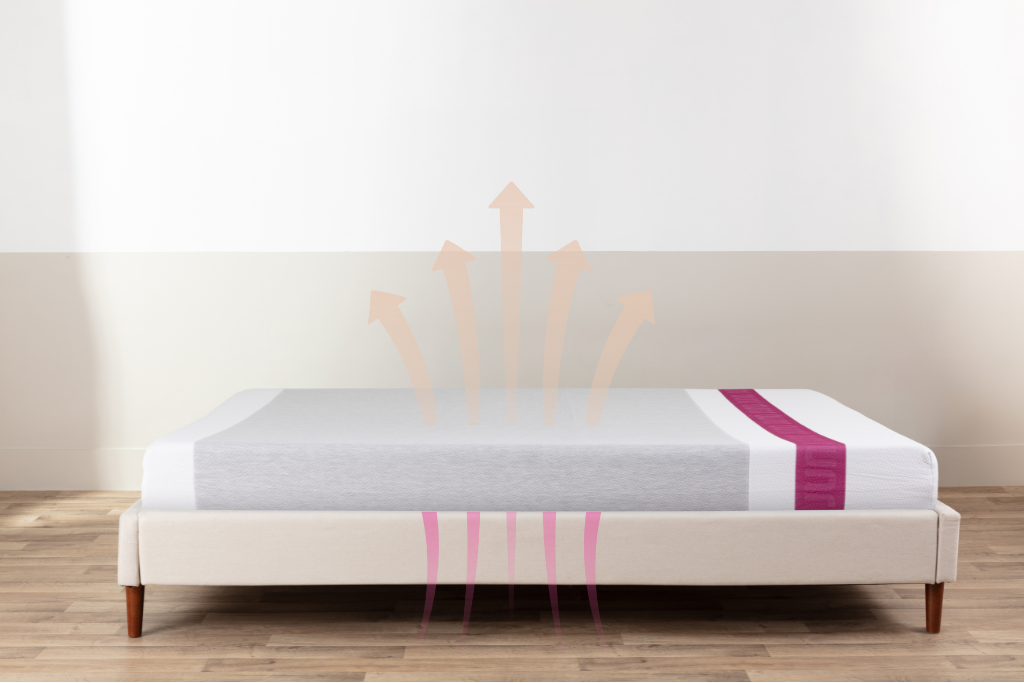
Cooling
Juno’s top foam layer claims to be infused with cooling gel, however, it did not outperform the other all-foam mattresses we tested, like the Endy Original, in regulating temperature. Customers can upgrade to Juno’s Cool+ Cover for a fee, however, purchasing a cooling mattress protector offers a similar effect.
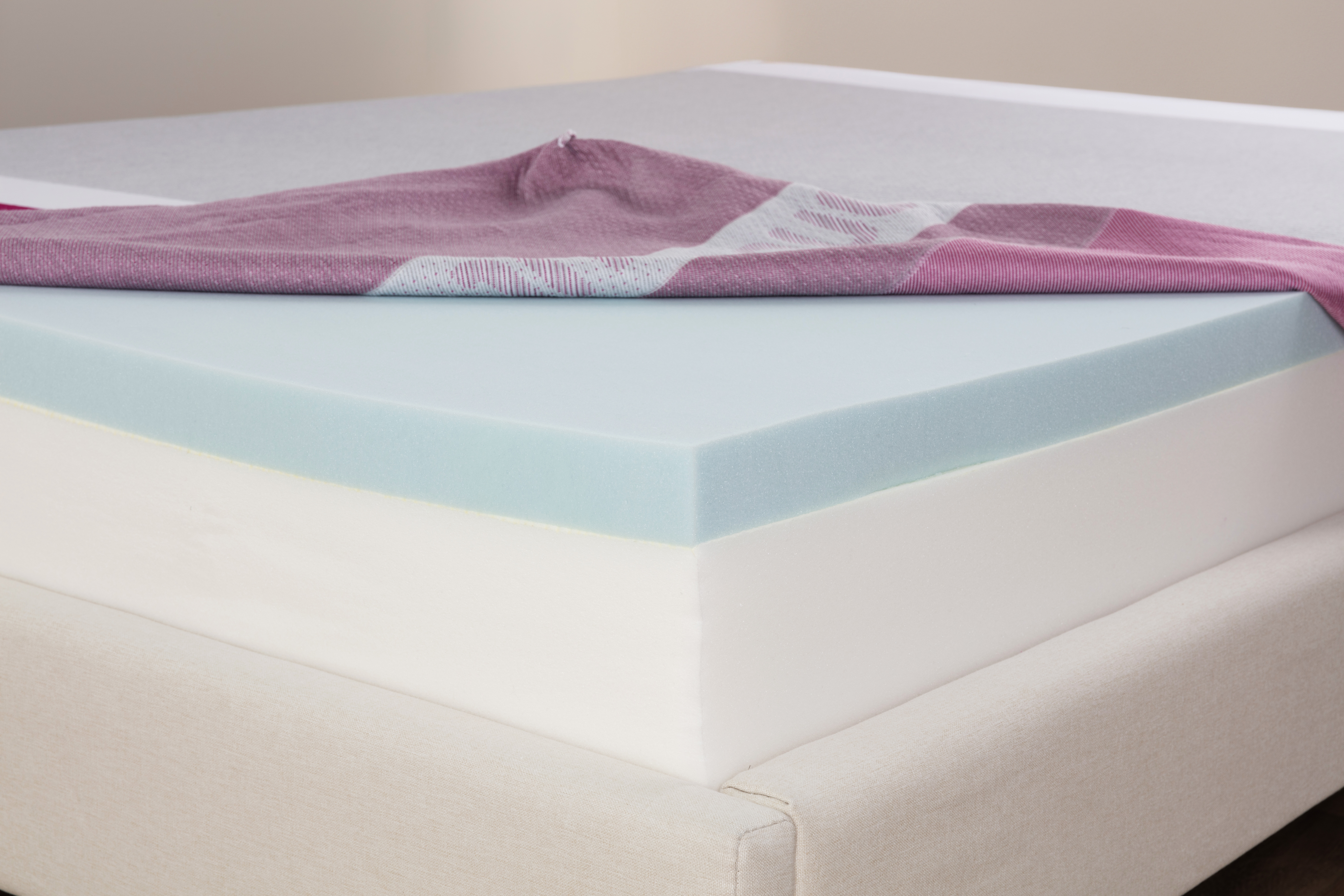
Edge Support
Juno doesn’t have a reinforced border or edge in its design. As a lightweight woman, this didn’t cause any concern. However, heavier testers did notice they sank into the foundational foam when sitting close to the edge.

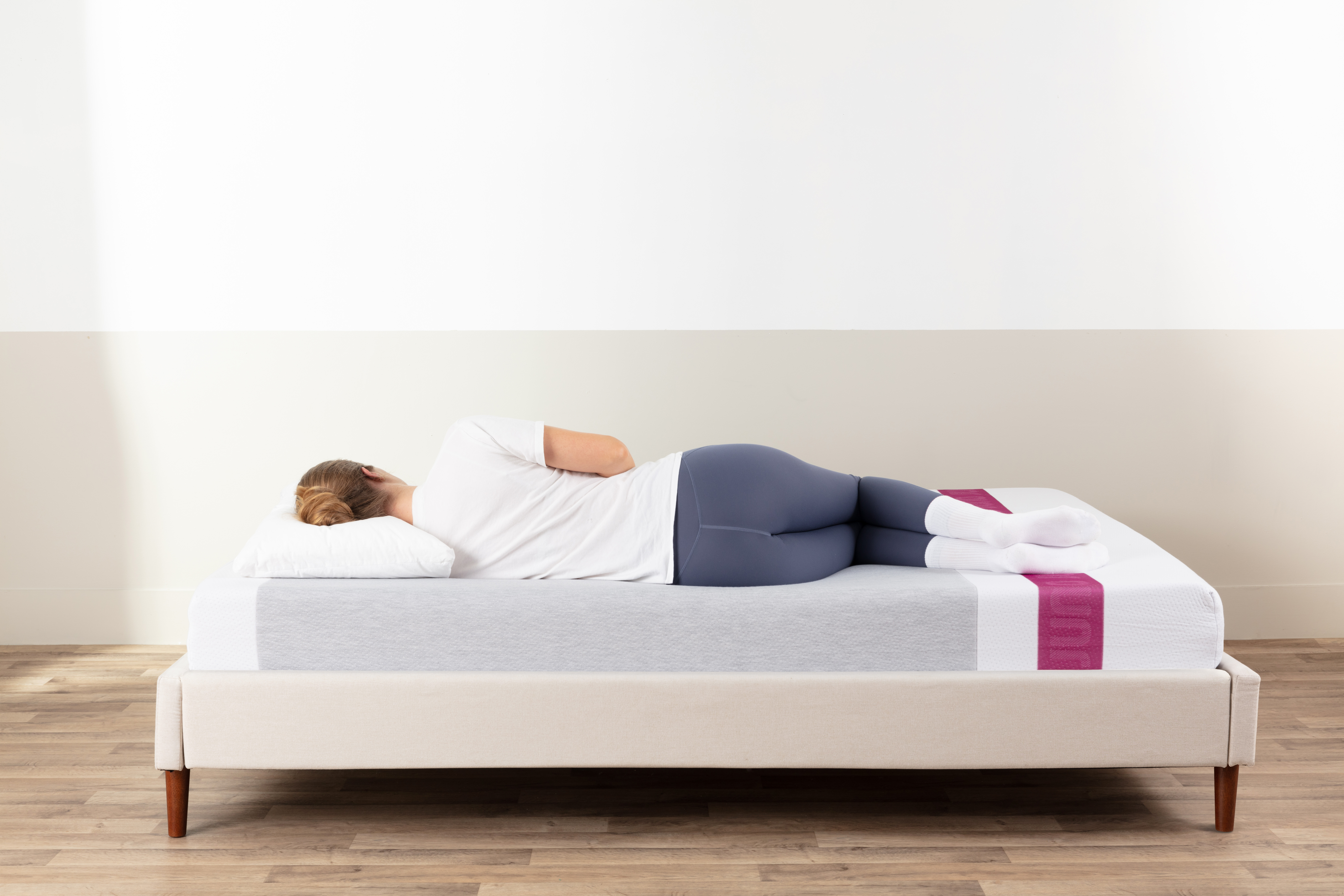
Sinkage and Responsiveness
There isn’t much sinkage on this mattress; however, due to low bounce, the mattress contours and cradles the body, preventing ease of movement. If you’re someone who moves around a lot at night, you might want to consider a mattress with a quilted cover, like the Endy Original, as it allows for better movement across the sleeping surface and can aid in getting in and out of bed with ease.
How does it suit different sleeping positions?
Side Sleepers
Lightweight side sleepers who prefer softer mattresses will find the Juno comfortable.
Back Sleepers
The Juno might work for back sleepers, however, you may prefer a firmer mattress like the S&S Firm.
Stomach Sleepers
We expect stomach sleepers to prefer less body contouring while sleeping, and thus, would recommend a firmer mattress than the Juno. . The Silk & Snow S&S Firm is our top recommendation.
Combination Sleepers
Combination sleepers toss and turn and switch positions throughout the night, which requires ease of movement. As the Juno has a flat surface and low bounce, we recommend looking at a quilted top, more responsive mattress like the Endy Original.
Lightweight Sleepers
Juno can provide adequate comfort without compromising support; however, it won’t appeal to sleepers who seek a firm mattress.
Heavy People
The Juno is quite a simplistic mattress with a two-layer construction. Heavier individuals may want to consider a mattress with more distinct and defined layers designed to support larger bodies. Silk & Snow, Endy, and Casper all have great all-foam options that boast multiple layers to prevent a mattress from bottoming-out.
Should You Buy the Juno Mattress?
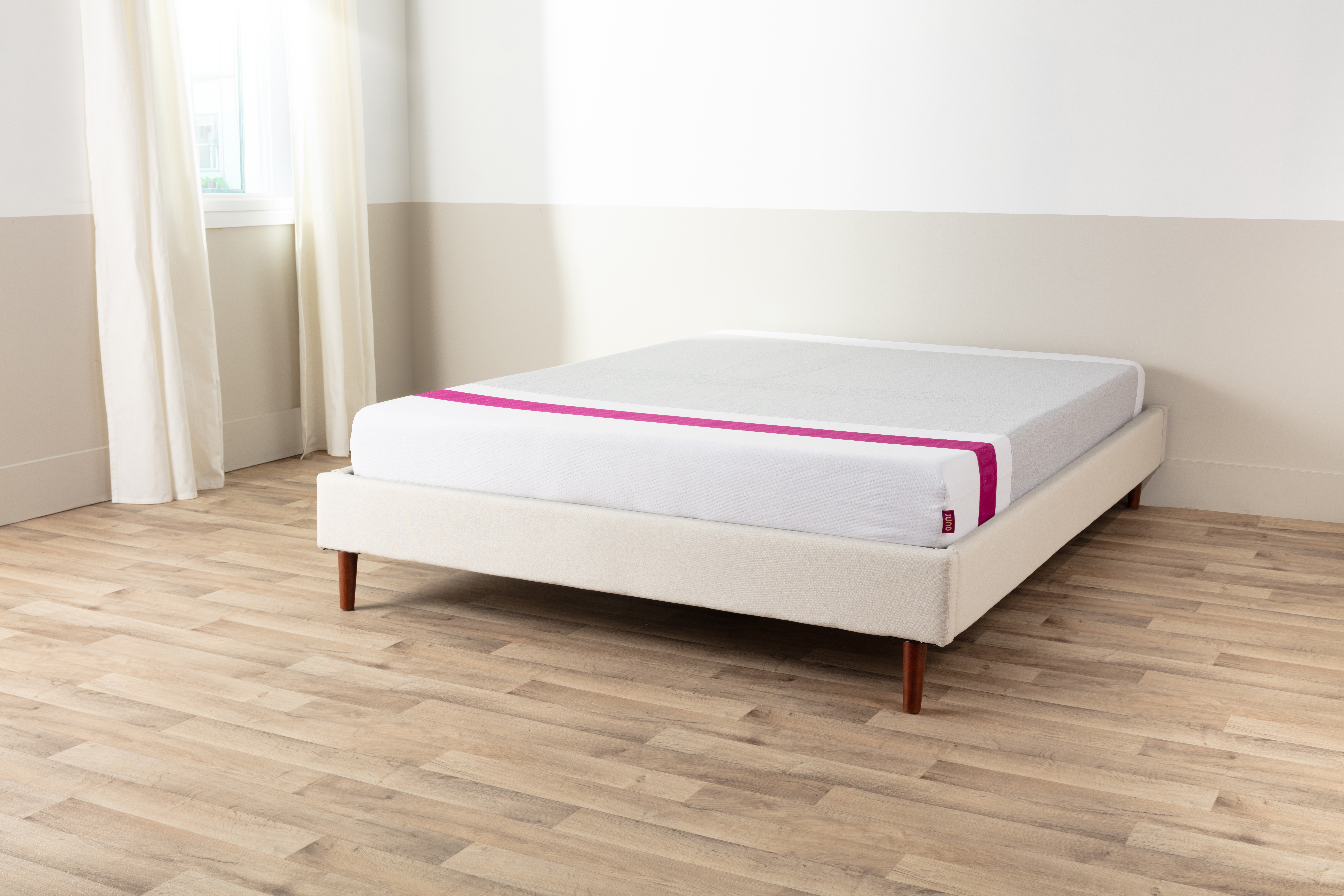
The Juno mattress is well priced and performs fairly well for motion isolation, however, the mattress did not impress myself or testers in comparison to more sophisticated models from Endy and Casper. For the low price point, this mattress can be used short-term, such as for vacation homes and for a growing child. However, I’d recommend investing in all-foam models with additional layers and performance innovations should you be looking to replace your main mattress.
For a few hundred bucks more, you can invest in high-quality mattresses that can last you a long time, such as The Endy Original, and Silk & Snow S&S Mattress. These alternatives display better cooling capabilities, have multiple firmness options, and support to suit a wide range of sleepers, making them well worth your investment.
Please note: All prices referenced in this article reflect MSRPs and are accurate to the best of our knowledge as of February 1, 2025.
Frequently Asked Questions
How Juno Compares to Similar Mattresses
|
Juno Mattress |
The Endy Mattress |
Silk & Snow S&S |
Casper Dawn |
|
| Rating |
4.89/10 |
9.44/10 |
9.26/10 |
9.38/10 |
| Firmness |
Medium-firm |
Medium-firm |
Medium-firm |
Medium-firm |
| Material |
Memory Foam |
Memory Foam |
Memory Foam |
Memory Foam |
| Cooling |
|
|
|
|
| Best For |
Short term use |
Suits a wide range of sleepers |
Suits a wide range of sleepers |
Suits a wide range of sleepers |


